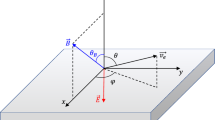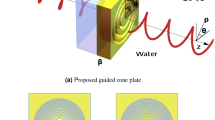Abstract
FOR the focusing of -rays two essentially different methods have hitherto been used, namely, the semicircular and the lens methods. It will be remembered that the former of these methods has a focusing action only in one plane, which means a greatly reduced intensity in comparison to the lens method. The latter procedure does not utilize the central part of the beam in the focusing, since the resolving power is proportional to the diameter of the central shutter. The lens method cannot, without the use of a special twisted shutter system, separate positive and negative electrons.
This is a preview of subscription content, access via your institution
Access options
Subscribe to this journal
Receive 51 print issues and online access
$199.00 per year
only $3.90 per issue
Buy this article
- Purchase on Springer Link
- Instant access to full article PDF
Prices may be subject to local taxes which are calculated during checkout
Similar content being viewed by others
References
Svartholm, N., and Siegbahn, K., Ark. f. Mat. Astr. Fysik, in the press.
Author information
Authors and Affiliations
Rights and permissions
About this article
Cite this article
SIEGBAHN, K., SVARTHOLM, N. Focusing of Electrons in Two Dimensions by an Inhomogeneous Magnetic Field. Nature 157, 872–873 (1946). https://doi.org/10.1038/157872b0
Issue Date:
DOI: https://doi.org/10.1038/157872b0
This article is cited by
-
A large alpha spectrometer
The Soviet Journal of Atomic Energy (1961)
Comments
By submitting a comment you agree to abide by our Terms and Community Guidelines. If you find something abusive or that does not comply with our terms or guidelines please flag it as inappropriate.



